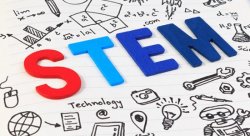Integrating Math Into Science Teaching
With their three-year, $1,147,000 National Science Foundation STEM + Computing grant, University researchers will explore new ways to integrate computational and mathematical thinking into earth and environmental science teaching and learning.
“This innovative program embodies STEM the way it should be, by breaking down traditional disciplinary boundaries and appealing to children’s natural creativity and curiosity to explore their world, connect with the environment and solve problems,” says College of Science and Mathematics Acting Dean Lora Billings.
Team members include Principal Investigator and Computer Science Professor Michelle Zhu and Co-Principal Investigators Mathematical Sciences Professor Nicole Panorkou, Computer Science Professor Bharath Samanthula, and Earth and Environmental Studies Professor and PSEG Institute of Sustainability Studies Associate Director Pankaj Lal. University graduate and undergraduate students will also contribute to the project.
Funds for “Assimilating Computational and Mathematical Thinking into Earth and Environmental Science,” will be evenly dispersed over the next three years by the Foundation’s Division of Research on Learning.
Novel instructional modules, handson activities, and laboratory and field experiences will integrate computational and mathematical thinking into earth and environmental science instruction for approximately 2,820 students enrolled in grades 5, 6 and 7 at lowperforming schools.
The team will also devise professional development activities for teachers and monitor the efficacy of curriculum on both students and teachers.
“As a math educator, I’m looking forward to providing opportunities for students to see the purpose and utility of math by integrating it with earth and environmental and computational thinking,” says Panorkou, who will lead the assimilation of mathematical thinking into the instructional units.
Zhu is heading efforts to bring computational thinking into the proposed 12 curricular modules and looks forward to working with students and teachers from local school districts. “I hope these modules will not only make science learning attractive, but will also get students interested in developing computer programs to solve STEM-related problems in the future,” she says.
